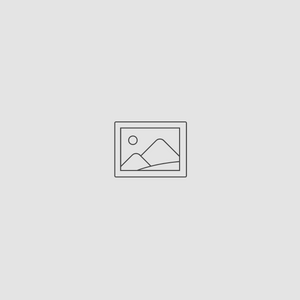Layering for Late-Season Whitetail Hunt
Feb 09, 2022
Weather Conditions During Late Season Hunts Can Vary
SKRE Gear® has compiled all the gear that you need into one convenient bundle for your late-season whitetail hunt!
Shop Late Season Whitetail Bundle
Base Layers
When talking about layering for a late-season whitetail hunt, first is the base layers. This is going to be the first thing that touches your skin. You want it to be comfortable and you want it to wick moisture off your skin. Your base layer is providing performance against the skin. If there's any movement mobility going on, you want that to basically allow your skin to stay dry and comfortable. Our lighter weight, next-to-skin base layers are going to be our Wasatch polyester and our 150 merino wool base layers.
Mid-Layers
Then you go into mid-layers. Your mid-layers job is to provide insulation between your base layers and your outer layers. Our mid-layers are going to be our 300 merino wool products, our Lost Peak lightweight jacket [now updated to the Grid Lite Jacket] could be used as a mid-layer, and even our Hardscrabble vest can be used either as a mid-layer or over the top for core body management.
Outer-Layers
Then you go to your outer layers. The outer layers' main function is to keep the elements out, which in turn allows the mid and base layers to do their job. We have Hardscrabble all season, which is a mid-weight shell. We have our Kodiak pants, which are a Hardscrabble type material with a fleece lining in the pants that offer a little more warmth. We have our Ptarmigan jacket and Ptarmigan pant that are a goose-down material. And then we have our new Guardian bib and Guardian jacket. These are really heavyweight for extreme cold.
Specific Layering for Late Season Whitetail Hunt
Cold Northern Late Season Hunt
The first scenario I want to cover is a Northern, really cold weather, late-season hunt. I'm really worried more about wearing a lot of high-performing outer layers because of extreme cold. In that scenario, I use the Wasatch polyester base layer against my skin, I use the 300 merino wool top and bottom for one of my mid-layers. And then I typically throw on my Hardscrabble pant and maybe even a hoodie or my Lost Peak jacket for another mid-layer. For my outer layer, I am going to go with one of the more heavy-duty, supreme outer layers, such as the Guardian Bib and jacket. If I'm walking a long way, I may pack my Ptarmigan pants in and put them on once I get there. If it's a short walk and an easy, pre-hung situation, I might wear the heavier for the walk in.
Windy, Cold Mid-Region Hunt
The second of my three scenarios is going to be a windy, cold mid-region late-season whitetail hunt. With this scenario, you still have really cold temperatures, but they maybe aren't quite as cold as the frigid north. But still really cold and we're going to interject wind into this because the wind is a big problem.I'm going to do much the same as the first scenario.I'm going to either choose the 150 merino wool base layer or the Wasatch base layer against my skin. Then I'll use the 300 merino wool mid-layers and Kodiak Pants. I'll also pack my Ptarmigan gear in. One thing that I do when it's really windy, is using my Nebo rain gear as an outer layer. It's one of the best wind blockers that we have. And if you can keep the wind off of you, the other layers can do their job.
Southern Late-Season Hunt
The third scenario is going to be the Southern late-season hunt. In this situation, we usually don't get a lot of really cold fronts that keep things cold from daylight to dark. It usually will be really cold early in the morning and later in the evening, but will warm up during the day. In that situation, you definitely want to go with the merino wool base layer, because you also have humidity in the air in the south most of the time. Merino wool is great at wicking away moisture from the skin and in this scenario, I'm really looking for moisture management. So I use the 150 merino wool base layer, the 300 merino wool mid-layer, and then depending on exactly how cold it's getting, I'm either going to wear my Hardscrabble pants or my Kodiak pants. I still like to pack in either my Hardscrabble or Ptarmigan jacket depending on the conditions. And then I'm going to put the vest over the top of all that for core body management. And if there's any moisture or any wind, again, I'm going to be using the Nebo rain gear on top of it to block all that out.
Consider Your Conditions
When it comes to properly layering for a late-season whitetail hunt, what we're talking about is sitting in those conditions for a long time. We're not talking about spot and stalking. We're not talking about hiking glassing. We're talking about going into an area and sitting there. You need to consider how much effort, how much energy, and how much body heat are you going to build up getting into your spot. And once you actually get there, how long are you going to sit in those elements? When it comes to late-season whitetail hunting, it can get up to 70 degrees during the day or you could be hunting a part of the country where it doesn't get out of the thirties or even maybe even the twenties. So there are all kinds of different ways you can layer your gear depending on the conditions you're hunting in.
Summary
Again as a summary, the next to skin stuff - your base layers - are going to prep your skin. It needs to be a soft, comfortable fabric, that can keep you dry and comfortable. Your mid-layer is going to be your insulation. You can have more than one mid-layer in extremely cold conditions. Then your outer layer is going to have everything to do with exactly how cold or what the conditions are on that late-season hunt and keeping them at bay. So if you consider those things and you look at everything that we have to offer, we can do pretty much anything A to Z. At SKRE, there's an option there for all different types of late-season whitetail hunting. Make sure to check out our late-season whitetail bundle to get you set up for success on your late-season hunt.



